#jacob geller art
Explore tagged Tumblr posts
Text
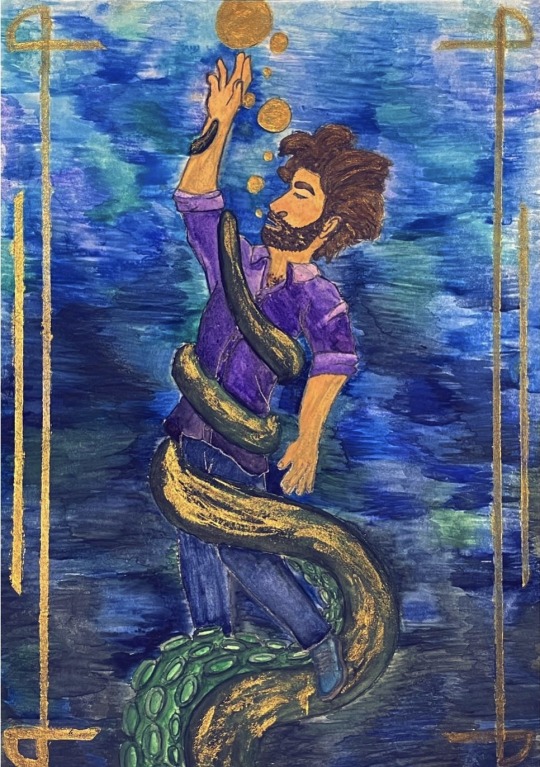
It's important that your video essayists get enough enrichment. A visit to the ocean is a great option, especially for any essayists who have expressed a fascination with the deep!
#jacob geller#jacob geller art#the kraken#watercolor#I'm so very very happy with how this one turned out its so cool i love it so much#now the real question is do i post it where he could see it aka on the worst webbed site of all time twitter dot com#also yeah the image quality sucks its not my fault blame instagram's editor#oh and the song the kraken by katie dey was on REPEAT while painting this PLEASE go listen to it I love it sooooo much
7 notes
·
View notes
Text
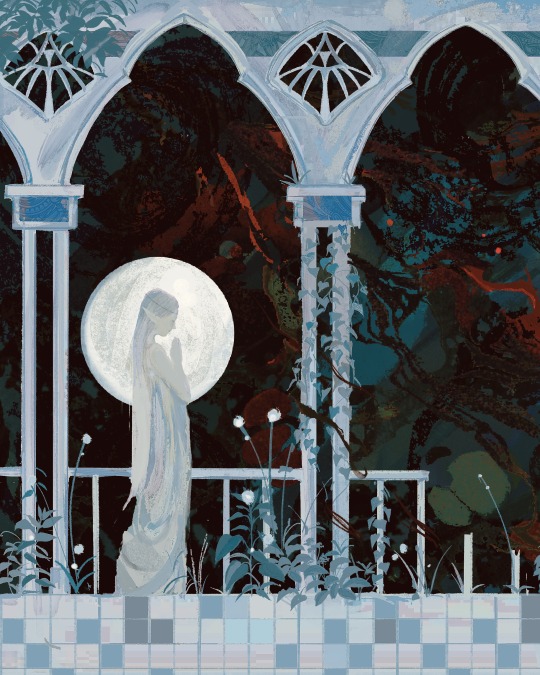
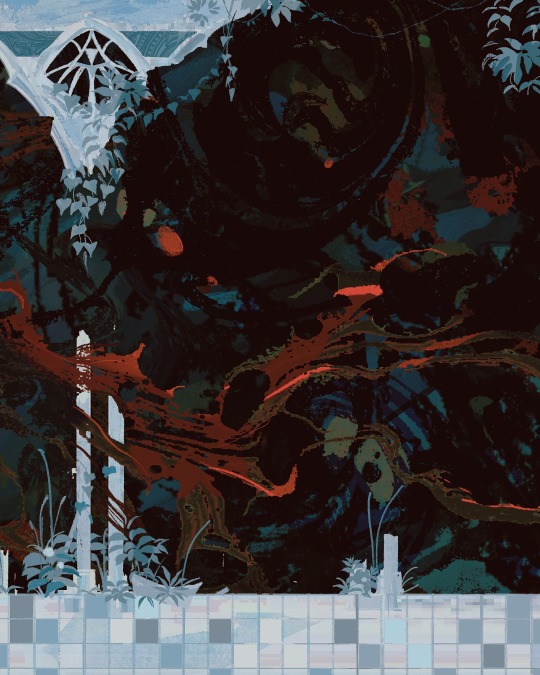
they let me do an illustration for jacob gellers book..! this one is for the essay "every zelda is the darkest zelda"
8K notes
·
View notes
Text
I made a golem :)
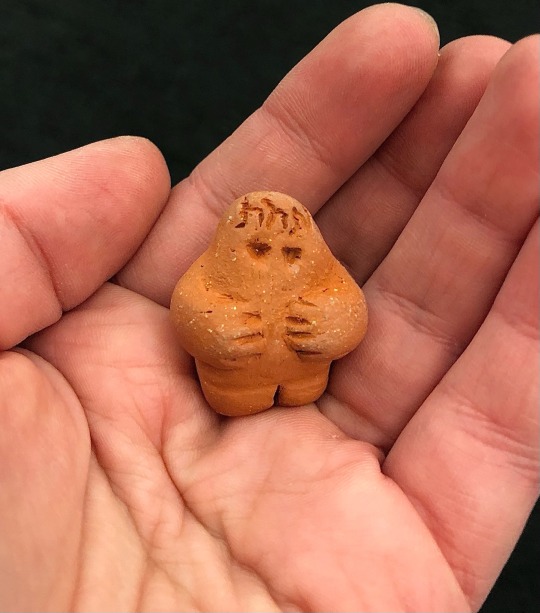
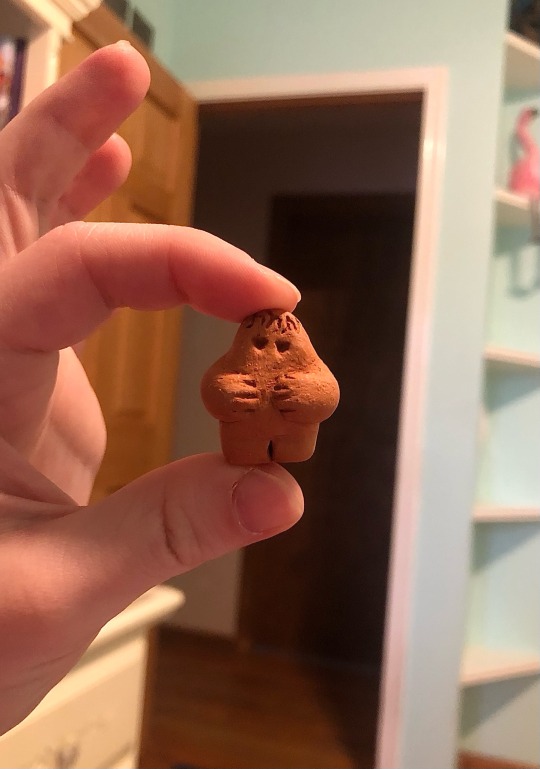
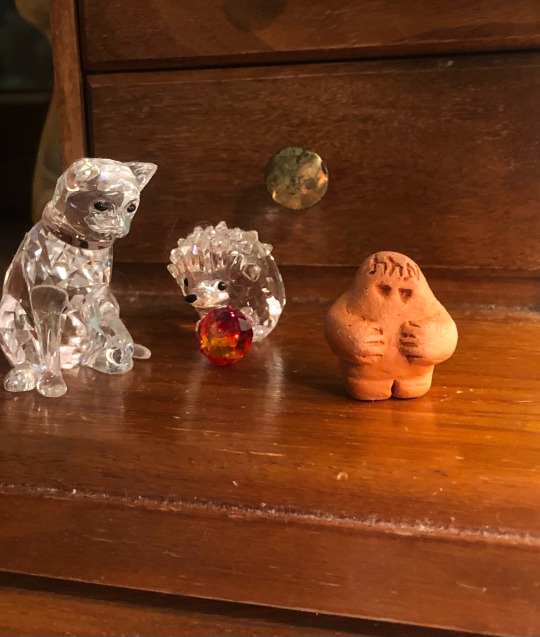
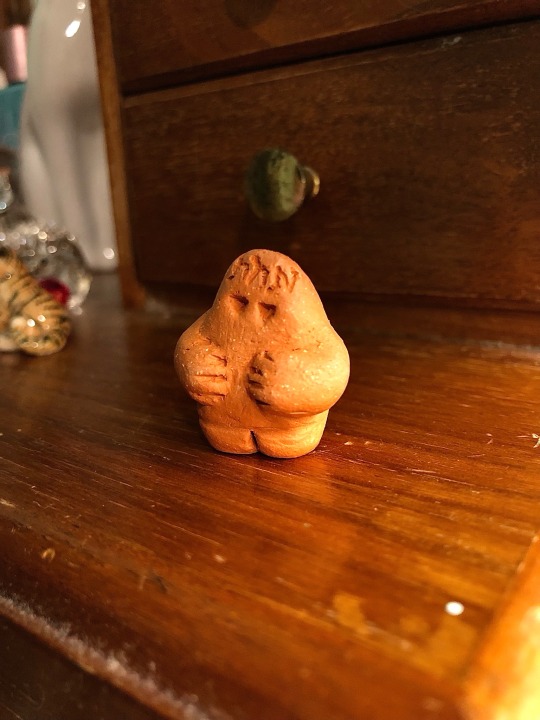
#art#ceramics#golem#Jewish#fucking struggled with the writing on his forehead lol#I poked a little hole on the top of his head for an eye pin#so it could be a necklace or something#but I think he’s a bit too big for that. maybe a keychain#I’m in a ceramics class rn I will post more stuff I made there soon#recently watched the German expressionist movie abt the golem bc I had access to it and bc of Jacob Geller#thank you Jacob very cool#I liked it
2K notes
·
View notes
Text
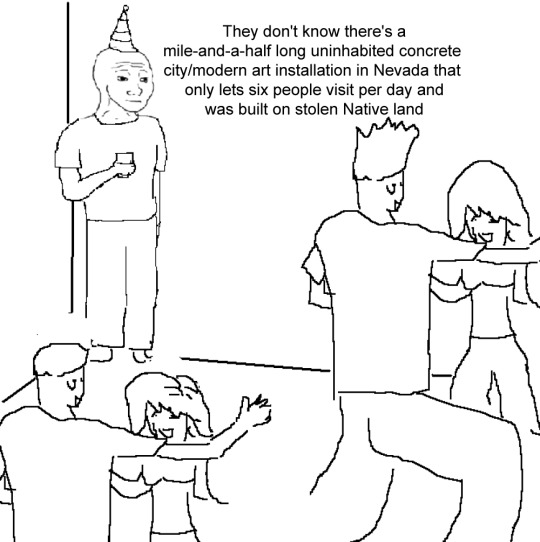
217 notes
·
View notes
Text
Golems and Eureka: Investigative Urban Fantasy
I did a writeup about how a character based on the Jewish folkloric golem might work in Eureka: Investigative Urban Fantasy! It includes a short essay about the thematic implications of the golem, and a set of custom rules for living dolls made of unfired clay.
If you don't know what Eureka is, it's the first tabletop RPG by @anim-ttrpgs, an up-and-coming indie studio making carefully designed and rigorously playtested tabletop games outside of the D&D 5e ecosystem. Eureka is a system for stories where amateur investigators look into intricate and (sometimes deadly) mysteries, trying to get to the bottom of whatever conspiracy is at hand. It also has robust rules for a variety of supernatural phenomena that may or may not exist, letting players explore the thematic and logistical implications of people who are vampires, man-eating alien shapeshifters, supernaturally animated dolls, or a variety of other strange creatures. It's one of the best RPGs I've ever played or read, so if you're interested in finely crafted tabletop games, mystery and detective stories, social commentary on the rights of "unsavory" marginalized people, or just supernatural creatures that eat people, I'd recommend checking it out.
My writing under the cut!
(I wouldn't normally post my own long-form writing here, but I felt good about this and also couldn't pass up an opportunity to talk about Eureka. This isn't very polished, so ignore any typos or awkward wording, but feel free to check it out and give your own thoughts. Enjoy!)
Thoughts on golems in Eureka (Essay – Rules below!)
Contrary to how the word is usually used in English-language fantasy media, a golem in its original context is not just a generic term for any supernaturally animated artificial creature. (If it were, then it would be more or less synonymous with Eureka’s use of the term “living doll” to begin with!) Rather, it refers to a specific creature in Jewish folklore: a facsimile of the human form made out of clay, animated by various words of power placed in or on its body, acting as a source of protection and power for the impoverished and oppressed communities which created it. It is a servant which exists to meet a need of its community, animated by the power of God as channeled through the expertise of a meticulous member of the Jewish community. (Arguably the most notable difference from the genre fiction definition is this inherently Jewish perspective. The creation of a golem is a closed-practice, specifically Jewish tradition, and also, the tradition of Jewish mysticism implies high degrees of specialized knowledge – some written down in studied texts, and others discovered by training under a mentor or interacting with other Jewish leaders. In this way, the golem implies a degree of studiousness and community engagement on the part of its creator, both of which are heavily emphasized values in Jewish spheres.)
My analysis of the thematic role played by the golem is probably best represented in the best-known folkloric golem, the golem of Prague. In this story, a 16th century rabbi of the Prague synagogue creates a humanoid form from clay with the purpose of protecting the ghetto (in this context, the dedicated Jewish quarter of the city) from pogroms and other antisemitic attacks, animating it into a golem by inscribing holy words on its head or placing a scroll of those words in its mouth. Things go wrong in ways which vary from telling to telling, with a common version of the story stating that the golem becomes too dangerous and destructive, and the rabbi removes the inscription of the holy name to render the golem dormant (although rather than destroying his creation, he preserves it in the synagogue’s attic to be reanimated if it’s ever needed). In a fun bit of wordplay, some tellings describe the holy inscription as being the Hebrew word “emet” (���truth”), which is only one letter away from the word “met” (“dead”), with the idea that the rabbi deactivates the golem by erasing a single letter. More traditional interpretations would describe a formula consisting of various divine epithets, either instead of or alongside the previous method. In the Jewish mystical tradition, names of God are thought to be emanations of God’s own glory, and invoking their power in specific ways is seen as a way of causing things beyond the bounds of normal reality.
A few thematic points jump out at me about the golem, both from the story of the Prague golem and from the broader characteristics of the golem. One is the fact that a golem is implicitly lacking in personal identity. Golems are almost never named, and they have very little agency in their own stories – in almost every version of the golem of Prague, for instance, it is deactivated because it has gained too much autonomy. It fights the wrong people, uses too much force defending its community, or even just falls in love, and so it is too dangerous to keep around. Even the terminology being used implies this lack of identity, as it etymologically derives from a Biblical Hebrew term, used only once in the Tanakh, which describes the unfinished form of a human before God breathes life into them. A golem is not perceived as a fully formed individual, but rather as an extension of its creator, built by someone else’s will and discarded whenever it isn’t needed. To me, this has a high degree of relevance to the themes associated with Eureka’s living dolls, who often also grapple with defining their own identity and purpose in the absence of their original context. Their unique struggles evoke concepts of alienation and depersonalization, and I think a golem without a master would have to deal with all of the same issues on that front as they navigate life as a newly independent person.
Golems as a whole, and especially the story of the Prague ghetto, also raise another problem that can create thematic conflict for a character: in their attempts to defend vulnerable people in their community, they can end up making situations more dangerous, rather than helping to defuse them. When the golem of Prague rampages, in many tellings, it doesn’t fully stem the tide of antisemitic antagonism. Instead, it destroys more of the ghetto and allows the gentile population to create a post-hoc justification for their hatred of the Jewish community. In the context of Eureka, I think that this can be a powerful metaphor for how the fear of oppression can lead people to become paranoid, closed off, and destructive to themselves and others. A golem whose purpose is to protect and serve the people around them might want to do just that, but if they find themselves in a situation where superhuman strength and stamina can’t solve a problem, they may be in way over their depth, and they might accidentally harm other people when they try to navigate that. (My use of the phrase “protect and serve” here is no accident – one of many inspirations for this thematic element is people who call for increased police presence in their neighborhoods, even when those communities are more harmed by over-policing than they are by crime. Being afraid and wanting to support their community spurs them to action, but it also blinds them to approaches that don’t use force.) For example, one golem character I’ve come up with has had to flee her home and change her name because she saw someone being harassed, didn’t know her own strength, and intervened in the first way she could think of: violently. She was lucky not to be arrested.
To get a little bit more specific, this theme is most specifically inspired by my own experiences in discussions among members of the Jewish community, as the scars from millennia of marginalization, expulsion, and murder don’t fade quickly. Paranoia is a veritable norm even within our households and places of worship. In our homes, many of us keep passports readily available if there’s a need to escape or show identification, and during any prayer service at a synagogue, there will likely be armed security guards standing at the door. Many of us laugh about it, but there’s a degree of genuine fear that we can’t shake. Often, that fear is harmless, but it can get exhausting to live with, to say little of how it affects other people or how it can be weaponized by bad actors. One look at how the Israeli government seeks to justify its violence in propaganda makes clear that the generational trauma of Jewish communities can be exploited and warped as a means to justify some pretty awful things. The figure of the golem is, in a sense our communal power fantasy – it’s comforting to think that with a bit of ingenuity and some elbow grease we can design our own hero to protect us and help us thrive – but even that fantasy is not free of the reality that, like a superhero, a golem’s innate abilities just aren’t always enough to save everyone. (Indeed, this tension is part of what inspired the Jewish creators of Superman: he has superhuman abilities that he uses to protect vulnerable people, but not every problem can be solved by punching it, and with all his strength he has to be very careful not to destroy everything he loves. This has been noticed by a lot of people, and I’m far from the first to bring it up, but in particular I’d say this observation is borrowed from the excellent video essay “The Golem and the Jewish Superhero” by Jacob Geller on YouTube.) A golem being fleshed out as a character can really lean into that tension.
One more theme I want to bring up is not something I’ve come to any particular conclusions about – it’s really just a few spare thoughts I’ve had rattling around, and an invitation to look into this concept more. It comes out of my research on the development of the word “golem” in Hebrew and Yiddish, as the term has developed beyond just the connotation of a humanoid clay form. It can be a pejorative term like “fool”, but more interesting to me is its use in reference to embryos and pupas. This made me consider the transitory nature of the golem as a representative of change, which I haven’t seen explored very much in any stories out there. Not only has the word gained those connotations, but also, looking at the characteristics of the golem as a creature gives some more fuel to that fire. The fact that it’s generally made out of specifically unfired clay gives it the sense of being unfinished. Its nature of being created in its adult form from the very beginning means that it can display a childish outlook as a seeming adult learning about the world outside of its creator’s life. The story of the golem of Prague even has an ending hook entirely centered around the idea of the golem being temporarily disabled but capable of being reanimated if need be. This idea of a golem as a character with a unique capacity to adapt and change hasn’t been explored very much, but I think it could be interesting to consider.
The last thing I’ll leave here is thoughts on character creation beyond themes. In this document, I’ve included a custom set of rules to play a living doll made of unfired clay, which is the traditional material for a golem. This isn’t playtested in any way, but since Eureka doesn’t try too hard to be balanced around physical attributes, I think it should probably work fine – it’s more thematic than anything. To make a golem, the doll’s purpose should be external in some way, pushing them to help and support other people in their community, especially the most disadvantaged of them. In terms of backstory, the details of a golem’s past can be left fairly foggy if you’d like, but the one thing that can’t be skipped is that they were intentionally created by a Jewish creator invoking Jewish traditions. It’s fine to make a living doll that was animated in some other way, but the character would not be a golem in that case. It’s similar to how Eureka vampires must have some association with Christianity, not because non-Christian undead monsters can’t exist, but because outside of that context, the specific vampire mythos lacks any meaning. (Honestly, also, if you don’t have background information about Jewish life and culture, I would recommend asking someone who does to help with your portrayal.) Finally, in terms of giving a golem a hook to investigate a mystery, it could of course be anything, but there’s one aspect in particular that I would consider: in some versions of the Prague golem’s story, it protected the ghetto by looking into cases where Jews were accused of murder and finding the true culprits, thus clearing the names of the accused. Which is to say, there’s genuine historical precedent for golems investigating mysteries, and it often happens as a means of helping people who are falsely accused of a crime. That’s not mandatory, but it could be fun to keep in mind. Have fun, and if anyone ends up playing a golem investigator using these guidelines, please let me know!
Wet Clay Living Doll – Rules
A living doll made from earthenware materials that have not been hardened by firing. This variant was originally designed to represent the golem of Jewish mythology, but it could also be used to portray, for example, an unfinished art project or a proof of concept for another piece. Depending on their construction and the flexibility of the clay they are made from, they may be treated as jointed or unjointed.
Wet clay living dolls weigh more than twice as much as an average person of their size would. They cannot swim or float, and will sink to the bottom of any body of water immediately.
These living dolls take half damage from all weapons while they have at least 1 point of Superficial HP remaining. Damage from falling is unaffected. Wet clay living dolls are immune to electrical damage.
When a wet clay living doll encounters fire or high heat (in excess of about 500 ºC), their outer layer of clay is fired and becomes hard and brittle. When this happens, this living doll should be mechanically treated as an unjointed living stone statue. If another character has access to tools to chip away the outer layer and a large supply of wet clay to replace it, they can reverse this process with a Full Success on a Technology roll. Regardless of the result, this process will take 1 Tick of time and cause 1 Superficial Damage to the living doll.
Wet clay living dolls are easier to repair. Do not apply the -3 Technology penalty when restoring Penetrative HP.
Wet clay living dolls generally possess superhuman strength, but when they are hurt, they may lose chunks of clay that would otherwise generate weight and power. They have a +5 Contextual Bonus to Athletics and Close Combat, but for each point of sustained Penetrative Damage, this bonus is reduced by 1 point.
Given 1 Tick of time, appropriate tools, and a supply of clay, a wet clay living doll can alter their physical appearance and proportions. They cannot precisely change specific details such as facial features, but can make themselves larger or smaller, change their perceived distribution of fat and muscle, and change the shape of their body enough to be recognizably different. When a wet clay living doll attempts to alter their body, roll Technology.
Full Success: The living doll successfully alters their body to exact specifications. They are able to completely alter their facial features and/or specify a new height and body type, and even on close scrutiny they will not appear out of the ordinary.
Partial Success: The living doll mostly succeeds in altering their body, but they get sloppy. They take 1 Superficial Damage, and close inspection reveals that parts of their skin have abnormal marks and blemishes, but they are still able to make the changes that they hoped for.
Failure: The living doll struggles with even the most basic alterations, doing a messy and imprecise job. They take 1 Superficial Damage, and cuts and blemishes are visible across their skin. They also don't convincingly make the correct changes to their bodies, doing either too much or too little to differentiate themselves from their previous form.
#eureka: investigative urban fantasy#eureka#ttrpg design#ttrpg#indie ttrpg#homebrew#jewish#judaism#golem#game design#jacob geller#essay#my work#queer art#living doll#doll#jew stuff#urban fantasy#detective#investigation#noir#neo noir
51 notes
·
View notes
Text

Public murder
#cheese posting#this was based on a comment under a Jacob Geller video so that's certaintly a source#td beth#td noah#art#total drama#i only used two colors per character btw
97 notes
·
View notes
Text

happy hanukkah! i was inspired by dragon quest monster sprites with this one. something about the stiffness and foreshortening that’s so charming to me
#did you know golems originated in jewish mythology?#jacob geller made a video about golems and judaism and its really good go watch it#i love that they made a jewish pokemon for the america region. it makes me feel like i belong here#also it was very hard to get this minimal color scheme to look nice and clean#leftysage art#pokemon art#golurk#pokemon bw
35 notes
·
View notes
Text

lorelei and the laser eyes is a wonderful and beautiful game with an enthralling narrative and incredibly satisfying puzzles. it has made me think deeply on the nature of art and its fair to say im a little haunted by it. there is also a piss meter
#lorelei and the laser eyes#i “played” by watching a friend stream and we all solved puzzles together :-)#i might draw actual art for it instead of just this which i drew to make my friends laugh :-)#my most succinct recommendation is: if you like jacob geller video essays youll like this game.#been thinking a lot about the “art for no one” video.
131 notes
·
View notes
Text
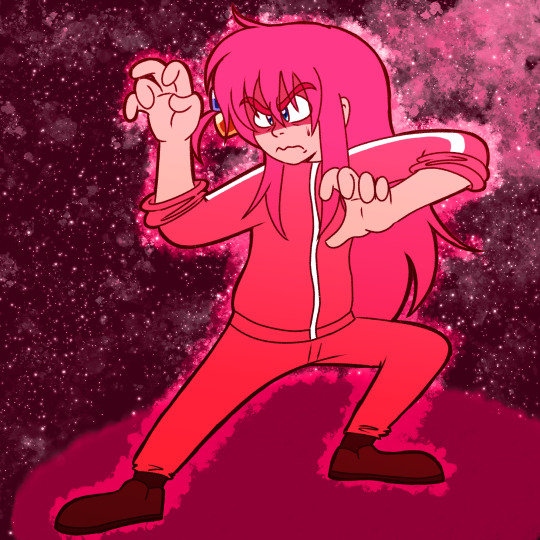
Bocchi doin' the OTHER famous Yamcha pose, boutta hit you with the Wolf Fang Fist 🐺
#hitori gotoh#bocchi the rock#bocchi the rock!#drawin' da bocch#this is a pro Yamcha household#was watching the new Jacob Geller video the other day & thought a BtR Martial Arts AU would be cool. maybe that's why i drew this 😆
76 notes
·
View notes
Text
☢️ lots of pluto (radiation iterator) art in my notes!
a continuation of this bc i added more since then :]
pluto! an experimental can-independent iterator model running on a demon core, and a way for me to incorporate my radiation hyperfixation into a character. he suffers, he does some violence, and then he gets better (maybe). onto the art!

i did draw him before we labelled the diagram so…whoops sorta. i love interactive geometry…it’s a reason why i doodled more on my worksheets than i did blank paper because it had structure. and why i like lined/dotted paper more i think
i was playing around with his design on these doodles ^_^ arm colors and mechanics. plus general marker colorcombos and experimentation! it was lots of fun. extra neat because i’m drawing my nuclear iterator on the chem notes that line up with his concept. very special to me :] but i must balance the doodling with paying attention ofc. eek…


there was always a speculative function aspect to him, but i’ve only been beginning to flesh that out recently since i have the time. first it was the initial visual redesign, and now it’s his workings.
how would a plutonium core powering an iterator work? what chemistry is involved? how would coolant work? answer to that last question is that he’s sort of a fish. bam 1/3 done. there’s stages to character writing/creation/redesign! woo creativity ^^


oh yeah he hates the sun or something. he’s very bias because he is powered by nuclear fission. my little greek stinker <33 my atom splitter <333 my mr the missile epper sleeper <33333

speaking of mr the missile, goodnight chat (maybe 🥱)
#kylehillgang#khg pluto#plutonium#demon core#rain world#rainworld#rw iterator#iterator#rain world iterator#iterator oc#rw iterator oc#pen&pencilparade#worksheetworkshopping#chemistry#chemistry class#such big bright eyes. i love that sm#they can change color maybe? it was a concept#radiation#radioactivity#traditional#traditional art#traditional drawing#traditional illustration#colored pencils#colored pens#lots of these were made with some awesome ballpoint(?) pens a friend gave me ^_^!!!#ever need a flashlight? hold this guy by the tail and there you go#you might have cancer but eh. jacob geller fear of dark is worse right?#radioactive#nuclear reactor
9 notes
·
View notes
Text
I love you fake haunted ps1 games, I love you purposefully and deliberately shitty graphics, i love you weird indie games made by a single person, i love you shoegaze fake deep indie horror games, i love you big blocky environments and pixelated textures and weird glitchy audio that sounds like it was recorded in a closet, i love you entire games made out of mods of other games, I love you weird uquiz choose your own adventures, i love you games made out of the tools that you were given simply for the love of creating
#rewatching jacob gellers After A City Is Buried again and i'm feeling feelings#clutches myhouse.wad to my chest#holds choice of robots tenderly in my arms#blows a kiss across the ocean (for chilla's art)#theres so many theres SO MANY and they're all SO GOOD#even when they suck they're so good because#someone made that they MADE that and they shared it#that's so cool
60 notes
·
View notes
Text

Ough funky robot
#eye strain#eye contact#sorta#gun tw#caps tw#v1#v1 ultrakill#ultrakill#ultrakill fanart#v1 fanart#jacob geller's orbital lasers video is really good btw#my art
76 notes
·
View notes
Text
I just pre-ordered Jacob Geller's book and now im gnawing at the bars of my enclosure because i won't see it til winter!!!!!!!!!!!
#jacob geller#it was spenny but im gonna count it as a bday treat#im just obsessed with him so bad#i can't wait wait to get my hands on something physical with his thoughts in it and the art looks amazing
33 notes
·
View notes
Text
Today I learned (from a Jacob Geller video, but here's an article, too) that Al Qaida went on a rampage committing arson, destroying ancient scrolls and manuscripts (specifically in Mali). A librarian who was preserving a collection of PRICELESS manuscripts in Timbuktu knew that Al Qaida would be coming to their library sooner or later, so over the course of six months with the help of several volunteers, they would transport around 200,000 books.
(Some of the documents & books in the library didn't make it out/were destroyed around January 2013) In the beginning they drove 600 mile (checkpoint filled) round trip again and again to each house that has volunteered to put their life on the line to save the books.
Eventually, that method became impossible, and he discovered he (and the other volunteers) only have one choice: FLOATING THE REST OF THE BOOKS DOWN THE NIGER RIVER. BOOKS. DOWN A RIVER. Seven Hundred Ninety One (791) TRUNKS/"footlockers" of BOOKS were sent down a river. You want to know how many made it? How many were recovered? ALL SEVEN HUNDRED NINETY ONE TRUNKS WORTH.
These books are literal relics. "Some date back to the 13th Century, and have survived more than 700 years." Bro, you are awesome, but you are going to give me a heart attack. Anyway, this some wild history and the art in these manuscripts is beautiful.

#Mali#Timbuktu#history#world history#african history#al qaeda#books#manuscripts#documents#islamic culture#art#tumblr history#west africa#jacob geller#video essay#article#recent history#calligraphy#african languages#13th century#ancient history#ancient art
142 notes
·
View notes
Text
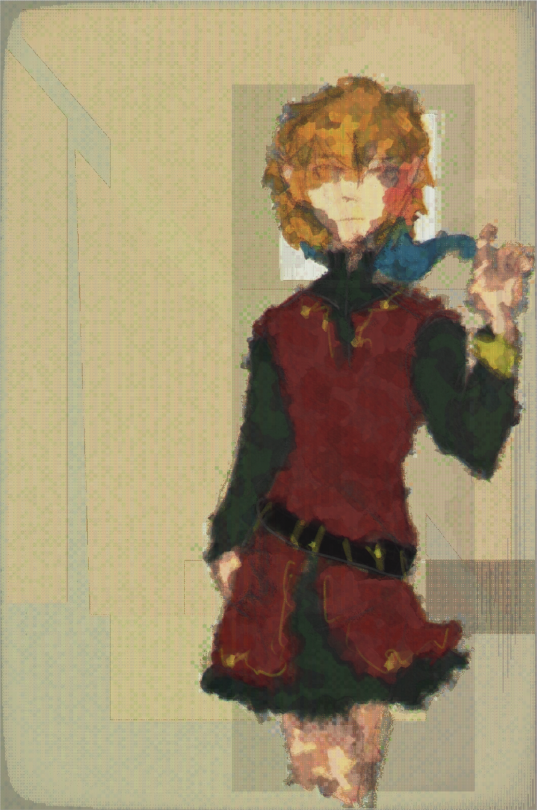
Do you ever get this sudden fear that you're dying really slowly, but you're less afraid of the dying part than the fact that you wouldn't know? Sometimes I wonder if my life right now is just memories. I don't like this old wallpaper, I think I need something new.
Reblogs are super appreciated!! tysm! :]
#my art#i spent. abt half an hour on the drawing itself. and two hours on filters#dw abt that caption ive just been watching jacob gellers video essays the whole time and am hungry. so#linked universe#linked universe fanart#linked universe legend#legend lu#lu legend#legend linked universe#lu fanart#there are a Lot of filters on this btw. more than it looks like.#like if you have a question the answer is probably filters
143 notes
·
View notes
Text
just gotta survive two more days until my finals are over and i can finally play the games i impulse bought!!! fuck!!!!!
#in other news i finally bought nine sols#ok its not entirely because im obsessed with collage rn (the band that sang the games theme song)#the art style is super cute. gameplay wise its sort of in the vein of hollow knight which i loved (even though i never beat it LMAO)#the entire aesthetic slaps also. 'tao-punk' is just one of those concepts that appeals to me specifically#also jacob gellers been recommending it a lot and i trust jacob gellers game recs LMAO#BUT ALSO nine sols the song by collage is also really good (<- obsessed with collage rn)
7 notes
·
View notes